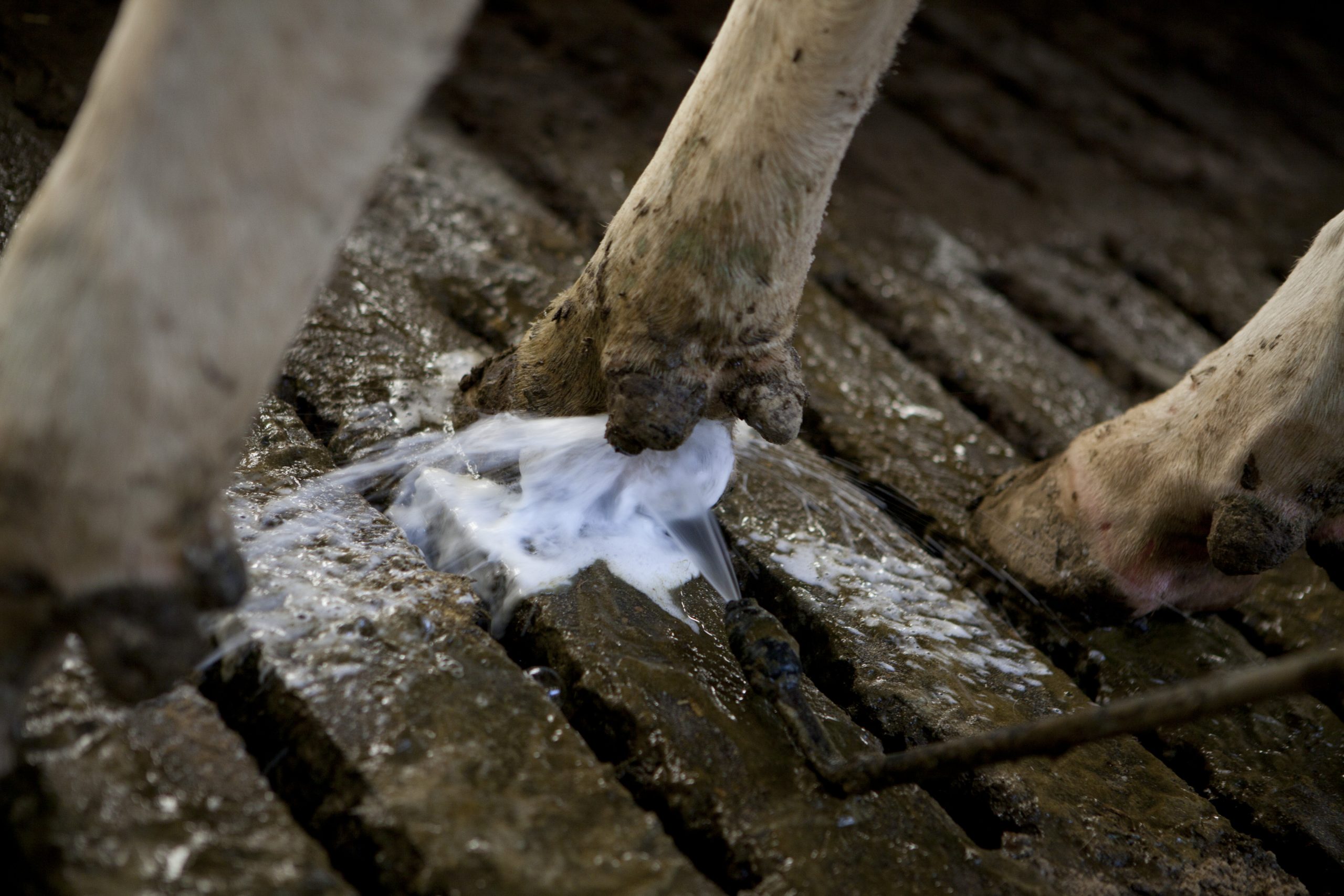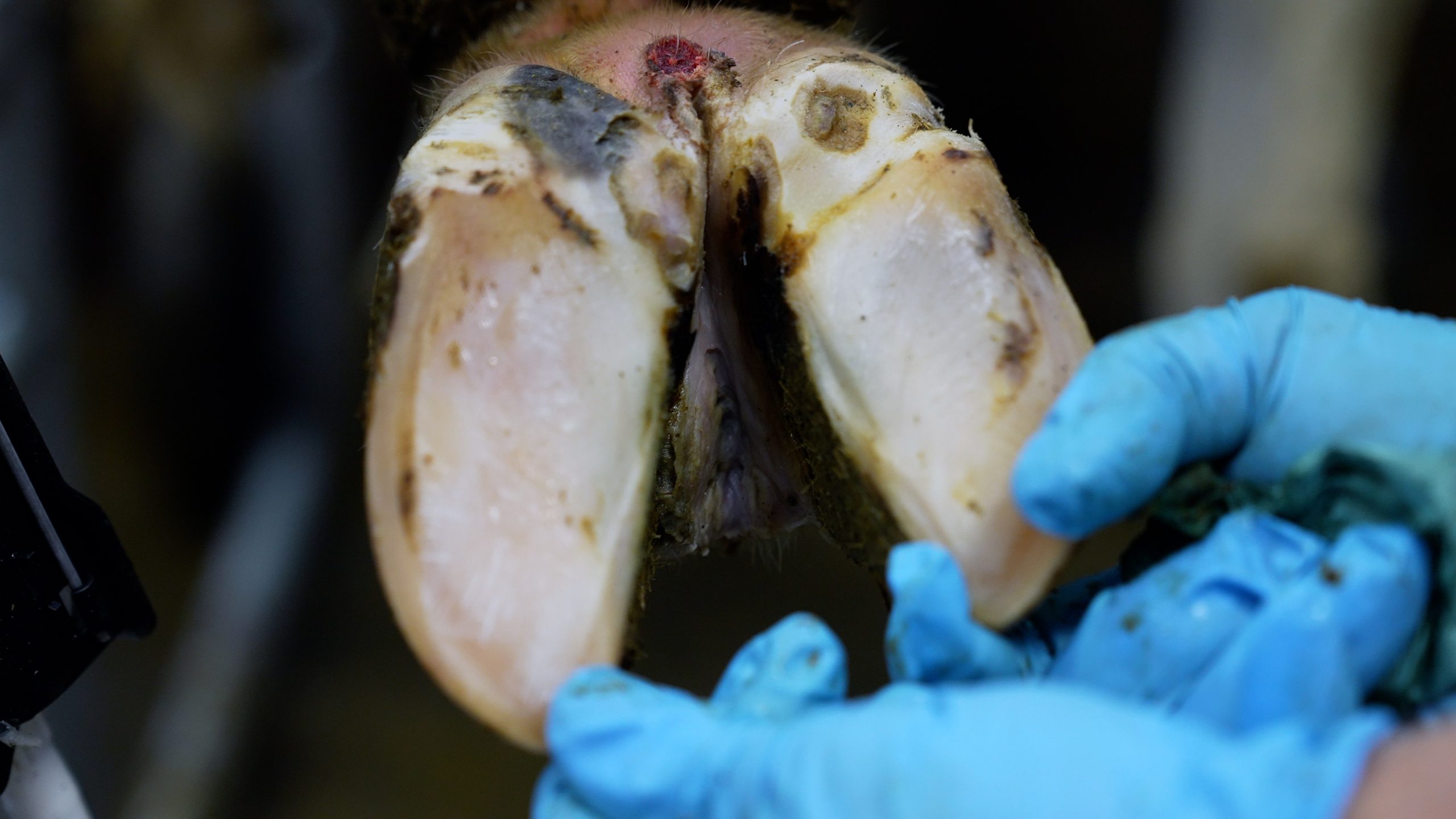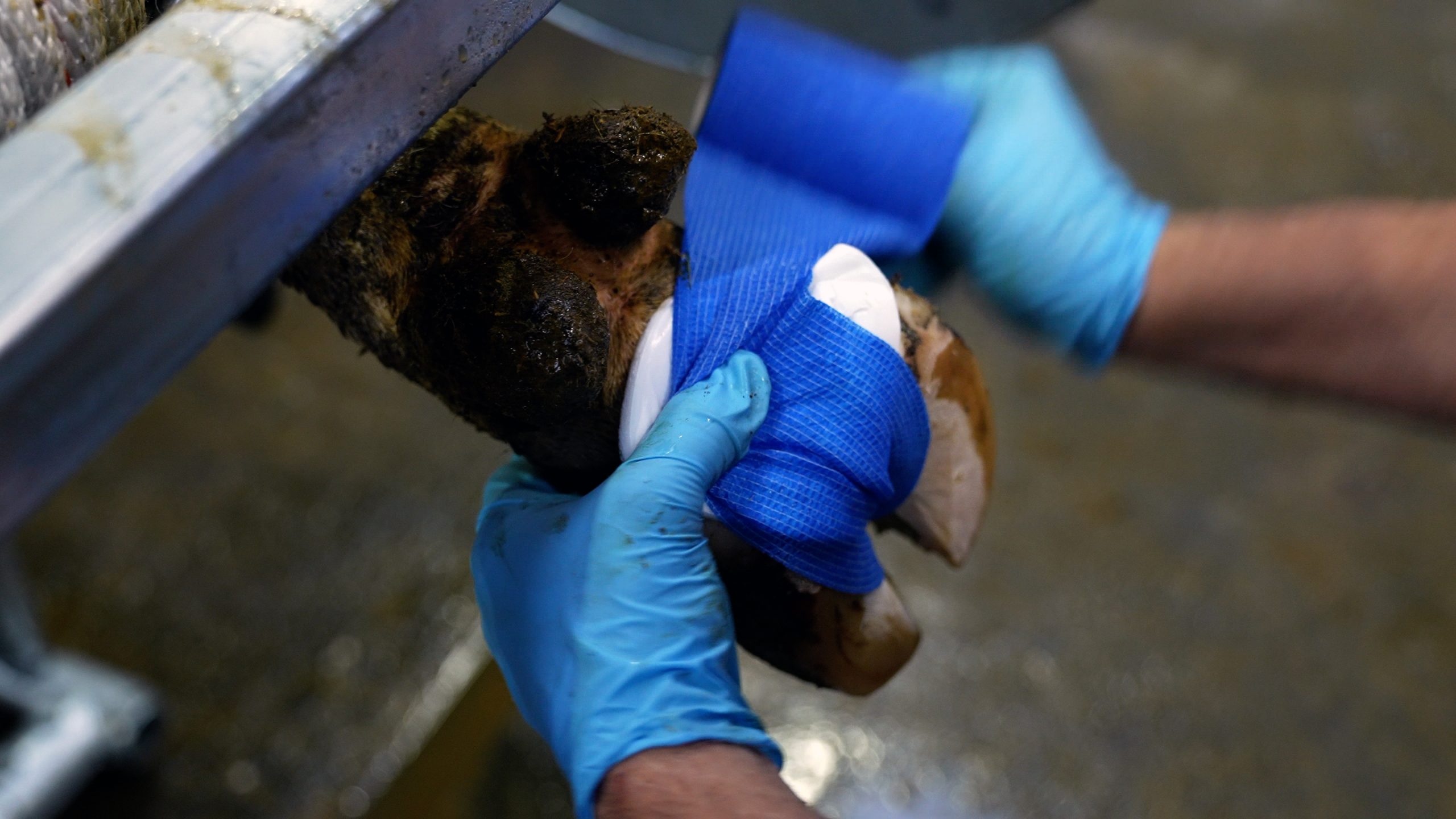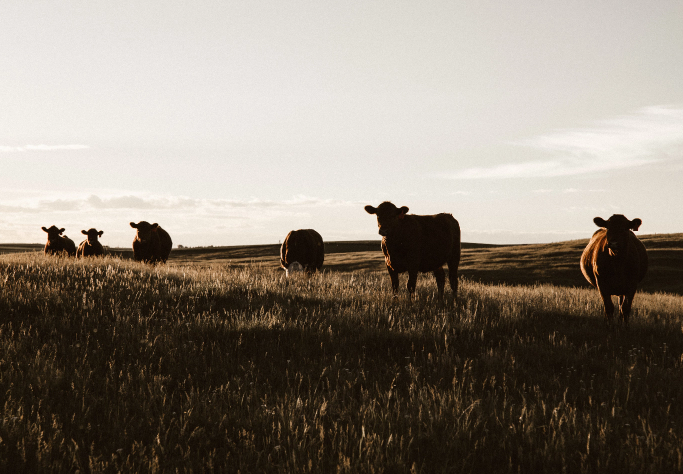Zero tolerance
Knowledge, prevention and treatment
Our vision is to fight all hoof diseases. With preventive treatment, we ensure that the animals have the best conditions for a natural healing process and that hoof diseases treated early or avoided. For more than ten years, we have developed the products in collaboration with professional hoof trimmers and some of the most skilled farmers in Denmark and abroad.
We know that day-to-day operations are a central part of being a modern farmer, and therefore our service is not only to deliver quality products, but also the all-important knowledge that is needed.
Why is hoof care important?
Zero tolerance
Hoof health is critically important for dairy cows due to its direct impact on their overall well-being, productivity, and the economic viability of dairy farming operations.
Here are several reasons why hoof health is of paramount importance in dairy cows
Mobility and Comfort
Healthy hooves are essential for a cow’s mobility. Cows with sound hooves can move freely, graze, access water, and lie down comfortably. Mobility is crucial for maintaining proper feeding, resting, and socializing behaviors.
Productivity
Lameness and hoof problems can lead to decreased milk production. Cows with compromised hoof health may be less active, spend more time lying down, and may not consume enough feed. This can result in reduced milk yield and overall productivity.
Reproduction
Lameness and hoof issues can negatively impact reproductive performance. Cows experiencing discomfort may have difficulty standing for mating, resulting in decreased fertility rates and longer calving intervals.
Economic Impact
Hoof problems can lead to increased veterinary costs, treatment expenses, and decreased milk production. The economic impact of lameness extends beyond treatment costs to include losses in milk production, impaired reproductive performance, and potential culling of affected cows.
Prevention of Lameness
Lameness is a common consequence of hoof issues. Preventing lameness is crucial to avoid unnecessary pain and distress for the cows. Regular hoof care, proper nutrition, and comfortable housing conditions are key elements in preventing lameness.
Pain and Discomfort
Hoof problems can cause pain and discomfort for dairy cows. This not only affects the cow’s quality of life but may also lead to behavioral changes, such as decreased feed intake and altered social interactions within the herd.
Reduced Risk of Secondary Infections
Hoof issues, if left untreated, can lead to secondary infections that may affect other parts of the cow’s body. This can exacerbate health problems and increase the difficulty and cost of treatment.
Quality of Life
Ensuring good hoof health contributes to an overall higher quality of life for dairy cows. Cows that are free from lameness and hoof-related issues are more likely to exhibit natural behaviors, experience less stress, and lead healthier lives.
Animal Welfare
Maintaining hoof health is an essential aspect of promoting good animal welfare. It aligns with ethical considerations in animal husbandry, reflecting a commitment to providing cows with a life free from unnecessary pain and suffering.
Longevity
Healthy hoofs contribute to the longevity of dairy cows. Cows with sound hoof health are less prone to early culling due to lameness or other hoof-related issues, resulting in a more sustainable and economically viable herd.
In summary, hoof health is a fundamental aspect of dairy cow management, with far-reaching implications for the overall health, productivity, and welfare of the animals. A proactive approach to hoof care is not only economically sensible for dairy farmers but also aligns with ethical considerations in animal agriculture.
In summary, hoof health is a fundamental aspect of dairy cow management, with far-reaching implications for the overall health, productivity, and welfare of the animals. A proactive approach to hoof care is not only economically sensible for dairy farmers but also aligns with ethical considerations in animal agriculture.
What factors to consider?
Hoof care for dairy cows is crucial for maintaining their overall health and productivity. Several factors play a significant role in hoof care for cows:
Routines
Checking hoof health as part of the normal routine in the barn for dairy cows is crucial for various reasons. Incorporating regular hoof inspections into the daily or routine management practices helps address potential issues promptly, contributing to the overall well-being and productivity of the herd.
Early Detection of Issues
Regular hoof inspections allow for the early detection of potential problems such as lesions, injuries, or signs of lameness. Early intervention can prevent these issues from escalating into more severe conditions that could affect the cow’s overall health.
Prevention of Lameness
Lameness is a common ailment with cows, often related to hoof issues. Regular checks help identify lameness at its onset, allowing for prompt treatment and preventive measures to reduce the impact on the cow’s mobility and well-being.
Cleaning and Trimming
Regular cleaning of hoofs is essential to remove dirt, manure, and debris. Trimming the hoofs helps maintain the proper shape and length, preventing overgrowth and related issues.
Preventing Overcrowding
Overcrowding in barns or feeding areas can lead to increased stress on the hooves due to competition for space. Adequate space and comfortable flooring can reduce the risk of hoof problems.
Proper Nutrition
A balanced and nutritious diet is crucial for hoof health. Consultation with a nutritionist can help develop an appropriate feeding plan.
Comfortable Housing
Providing comfortable and clean resting areas helps minimize stress on the hooves. Dry and well-bedded areas reduce the risk of infections and promote overall hoof health.
Proper Flooring
The flooring in barns and walkways should be non-slip and provide good traction. This helps prevent slipping, injuries, and excess wear on the hoofs.
Treatment
Timely treatment, often with the assistance of a hoof trimmer or veterinarian, is crucial for resolving hoof problems.
Hoof wash
Automatic hoof wash systems with disinfectants can help prevent and control hoof infections. Regular use, can reduce the risk of contagious diseases affecting the hoofs.
Genetic Considerations
Some dairy cow breeds may be more prone to certain hoof issues. Selective breeding for hoof health can contribute to a healthier herd over generations.
By addressing these factors, farmers can implement effective hoof care practices, contributing to the overall health, welfare, and productivity of their cows. Collaboration with veterinarians and hoof care professionals can further enhance the effectiveness of a comprehensive hoof care program.

Hoof Wash
Maintaining clean hoofs in dairy cows is of paramount importance for various reasons, as it directly impacts the overall health, welfare, and productivity of the animals. Here are several reasons highlighting the importance of clean hooves in dairy cows:
Prevention of Infections
Clean hooves help prevent the accumulation of dirt, manure, and debris, reducing the risk of bacterial and fungal infections. Infections in the hooves, such as foot rot or digital dermatitis, can cause lameness and discomfort.
Prevention of Thrush
Thrush is a common hoof ailment caused by a bacterial infection. It thrives in damp and dirty environments. Clean hooves help reduce the risk of thrush, contributing to overall hoof health.
Facilitation of Hoof Care Practices
Clean hooves make it easier for farmers and hoof care professionals to perform routine inspections, trimming, and other necessary hoof care practices. This facilitates timely interventions and preventive measures.
Prevention of Lameness
Lameness is often linked to hoof issues, and a clean hoof environment is essential for preventing conditions that may lead to lameness. Regular cleaning helps address potential problems before they escalate.
Cost Savings
Preventing hoof issues through regular cleaning can lead to cost savings by reducing the need for veterinary treatments, medications, and other interventions associated with lameness and hoof-related ailments.
In summary, maintaining clean hoofs on cows is essential for preventing infections, promoting comfort, reducing the risk of digital dermatitis, and ensuring optimal hoof health. It is a fundamental aspect of responsible herd management and contributes to the overall success and sustainability of a dairy farming operation.
Hoof Trimming
Hoof trimming on cows is a critical practice that involves the careful and skilled removal of excess hoof material to maintain proper hoof health and prevent lameness. Several factors should be considered when performing hoof trimming in dairy cows:
Frequency of Trimming
The frequency of hoof trimming depends on various factors, including the cow’s age, breed, environment, and individual hoof growth rates. Generally, cows may require hoof trimming every 6 to 12 months.
Stage of Lactation
Hoof health can be influenced by the stage of lactation. Cows in early lactation may experience more stress on their hoofs due to increased body weight and milk production, requiring more frequent trimming during this period.
Hoof Conformation and Balance
Trimming should focus on maintaining proper hoof conformation and balance. This involves ensuring that weight is evenly distributed across the hoof and correcting any deviations that may lead to uneven wear or stress on specific parts of the hoof.
Prevention of Overgrowth
Overgrown hoofs can contribute to lameness and other health issues. Hoof trimming aims to prevent overgrowth by removing excess material, particularly at the toe and heel, to maintain an optimal hoof length.
Identification of Lameness
Hoof trimming provides an opportunity to identify signs of lameness or other hoof-related issues early on such as claw lesions, ulcers, or infections.
Proper Equipment and Technique
The use of appropriate hoof trimming tools, including knives, disc’s, and hoof blocks, is crucial. Trimmers should be skilled in proper techniques to avoid causing unnecessary stress or injury to the cow during the trimming process.
Cleaning
Cleaning hoofs gives an clear view that is crucial for the trimmer to assess the condition of the hooves accurately and identify any issues such as lesions, cracks, or signs of infection
Environmental
Collaboration with a Hoof Care Professional
While routine maintenance trimming can be performed by farm personnel, collaborating with a hoof care professional or a veterinarian is advisable for more complex cases or if specific hoof issues require specialized expertise.
Record Keeping
Maintaining records of each cow’s hoof health, trimming history, and any observed issues is important. This helps track the effectiveness of the trimming program and allows for early detection of recurring problems.
By considering these factors, dairy farmers and hoof care professionals can implement effective hoof trimming practices that contribute to the overall health, comfort, and productivity of cows. Regular monitoring and prompt intervention are key elements in successful hoof health management.


Hoof Care
Hoof care play a crucial role in the management and treatment of various hoof conditions on cows. The correct use of hoof bandages and choosing appropriate products is important for several reasons:
Protection and Support
Hoof bandages provide protection to the hoof and the surrounding structures. They offer a physical barrier against environmental contaminants, preventing dirt, manure, and debris from entering and causing infections. Additionally, bandages can offer support to the hoof, particularly in cases of injuries or diseases that compromise the structural integrity.
Wound Healing and Prevention of Infections
In cases of injuries, lesions, or skin infections, a properly applied bandage can aid in wound healing by keeping the area clean and free from contamination. It reduces the risk of infections and promotes a more favorable environment for tissue & skin repair.
Application of Topical Treatments
Hoof bandages provide a means to apply topical treatments, such as balms and other products directly to the affected area. This targeted application ensures that the therapeutic agents stay in contact with the hoof and have a better chance of efficacy.
Reduction of Pain and Discomfort
For conditions causing pain or discomfort, such as abscesses or injuries, a properly applied hoof bandage can provide a degree of cushioning and support, reducing pain and encouraging the cow to bear weight more comfortably.
Minimization of Movement and Stress
Bandaging helps limit movement in the affected hoof, reducing stress on the injured or compromised structures. This is particularly important in cases where movement may exacerbate the condition or impede the healing process.
Prevention of Further Damage
Hoof bandages can prevent further damage or complications by immobilizing the affected area. This is important for conditions, where movement or the environment could worsen the injury.
Enhancement of Treatment Effectiveness
A bandage combining with pads or dressings, enhances the overall effectiveness of the treatment. This ensures that the bandage serves its intended purpose of protection and contributes to the healing process.
Support During Hoof Trimming
In cases where hoof trimming is necessary, a hoof bandage can provide support and protection during the process. It may help manage discomfort and reduce the risk of further damage.
Professional Guidance
Always consult with a hoof trimmer or veterinarian to determine the most appropriate bandage and products for the specific hoof condition. Professionals can provide valuable insights based on the nature and severity of the issue.
In summary, the proper use of hoof bandages and careful selection of products contribute to effective hoof care, wound management, and the overall well-being of cows. Consulting with a Hoof trimmer or veterinarian ensures that the chosen bandage and treatment plan align with the specific needs of the individual cow and the nature of the hoof condition.
.

Contact us
We are always ready to answer your questions or have a chat about hoof care. If you wish to become a part of the Bovi family, don’t hesitate to get in touch with us.